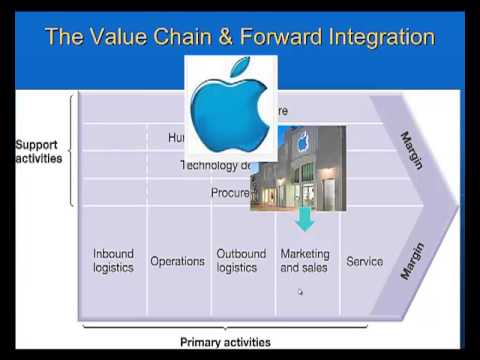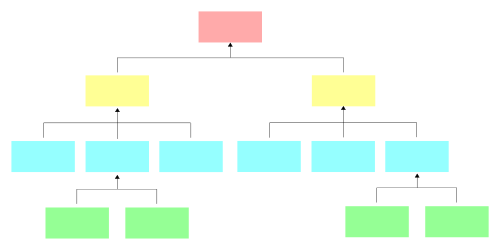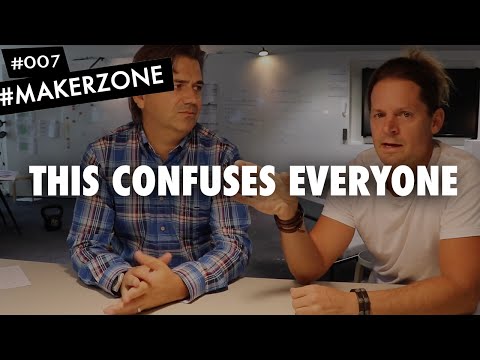
Stop-limit orders may not get executed whereas a stop-loss order will always be executed (assuming there are buyers and sellers for the security). Buy Stop Orders are used to enter a trade when you want to buy the asset at a more expensive price than its current price. Stop-loss and stop-limit orders can provide different types of protection for both long and short investors.
In these situations, investors risk getting stopped-out of positions from what amounts to only short-term fluctuations, even if the stock price(s) revert back to their previous levels. Getting stopped out in this manner results in positions being exited at an unfavorable price. Let’s say you have a stop price of $50 on a sell stop limit order and your limit price is $45. If market conditions are appropriate and the price of a stock reaches $50 it would trigger a limit order that would only activate at the limit price of $45 or better. A stop order, sometimes referred to as a stop-loss order, is when you set a specific stop price on a stock.
A stop-limit order is similar to a basic stop order, but with one added condition. With a stop limit, the investor not only specifies a stop price, but also a stop limit price. If the security in question reaches the stop price, this will trigger a limit order (instead of a market order for a regular stop order). The trade will only execute once the trigger price is reached and the limit price can be executed. While stop orders are most commonly used to limit the risk of losses on existing positions, the use of stop orders during times of wild market swings, or on volatile securities in general, poses a different type of risk.
Investor Alerts and Bulletins
The investor does not want to liquidate his position then, as he is hopeful, the stock price will go higher. However, he also wants to guard against losing all of the profit he has from buying the stock. After initiating a trade in the financial markets, which subsequently becomes profitable for an investor, the investor may enter a stop order for the purpose of protecting and preserving at least part of their profits. When a stop order is triggered, it then effectively becomes a market order, to be executed immediately at the best available price. An exception to such a situation exists if the order is entered as a “stop-limit” order. You can use a stop order as an automatic entry or exit trigger upon a certain level of price movement in a specified direction; it’s often used to attempt to protect an unrealized gain or minimize a loss.
You should move your stop-loss order only if it’s in the direction of your position. For example, imagine you’re long XYZ stock with a stop-loss order $2 below your entry price. If the market cooperates and moves higher, you can raise your S/L to further limit your loss potential or lock in profits.
Credits & Deductions
Investors generally use a buy stop order in an attempt to limit a loss or to protect a profit on a stock that they have sold short. Investors generally use a sell stop order in an attempt to limit a loss or to protect a profit on a stock that they own. For example, if a trader buys a stock at $30 but wants to limit potential losses by exiting at a price of $25, they would enter a stop order to sell at $25. The stop-loss triggers if the stock falls to $25, at which point the trader’s order becomes a market order and is executed at the next available bid.
Stop-loss orders guarantee execution, while stop-limit orders guarantee the price. When a stop-loss is triggered, it will execute the contract at the market price, not the stop-loss price. There is an increased risk of the execution price for higher volatility securities to be below the stop-loss price. Traders can have more control over their trades by using stop-loss or stop-limit orders.
- But good-’til-canceled (GTC) trailing stop orders will carry over to future standard sessions if they haven’t been triggered.
- If the price of the security drops quickly or there is a gap in trading, the order may not be filled at the desired limit price or at all.
- Whereas a standard market order executes instantly regardless of the underlying security’s price, a stop-order and stop-limit order both execute only when a target price has been met.
- It can be due to factors like earnings announcements, a change in an analyst’s outlook or a news release.
For instance, if you placed a stop expecting prices to continue rising, but they suddenly began trending down, your position is on the wrong side of the trend. There are three types of stop orders you can use when trading, stop-loss, stop-entry, and trailing stop-loss. A strategy that takes into account more than one triggering price, called a trailing stop or trailing stop-limit, also could be used by an investor who can’t conduct around-the-clock surveillance. Jane could also use a buy stop-limit as a first-time purchaser of shares. On top of that, if it does meet the stop price, your trade will occur at the next available price which could be higher or lower than you want. You also want to be aware of how commission costs may add up if there are various transactions.
A trailing stop order is a conditional order that uses a trailing amount, rather than a specifically stated stop price, to determine when to submit a market order. The trailing amount, designated in either points or percentages, then follows (or “trails”) a stock’s price as it moves up (for sell orders) or down (for buy orders). No matter what type of investor you are, you should be able to easily identify why you own a stock.
A stop order allows you to enter or exit a position once a certain price has been met, but since it turns into a market order, it may be filled at a less favorable price than you expected. You can place a buy-stop order by placing a limit on the price of $26.75 per share for 50 shares. As soon as the price reaches your preset limit, the order turns into a market order and it goes through. A stop order avoids the risks of no fills or partial fills, but because it is a market order, you may have your order filled at a price that is worse than what you were expecting. For example, imagine that you have set a stop order at $70 on a stock that you bought for $75 per share.
What are the risks of using stop orders?
While potential benefits of using stop-limits are demonstrated from the model scenarios above, less obvious are the drawbacks and the limitations of this strategy. Stop orders are just one type of order you can place to exert control over your trades. Although promoters advertise that ERC submissions are “risk free,” there are significant risks facing businesses as the IRS increases its audit and criminal investigation work. Understanding the type of order that you use and how to use it, can save you a lot of trouble as depending on the trading platform that you use, some might save you from your own mistakes and others might execute them. In this case you have to manually choose STOP order, enter a price and then click buy or sell. Market orders would get you the best available price at the time of execution.

Traders and investors should always have a stop-loss in place if they have any open positions. Otherwise, they’re trading without any protection, which could be dangerous and costly. A stop-loss order’s execution may not be at the exact price you specified. For example, say you had a stop-loss entry price of $32.25, but it was executed at $32.28, or $0.03 higher than you specified. That difference of $0.03 is called slippage, which is caused by many factors, such as lack of liquidity, volatility, and price gaps in news or data. Technical analysis, the study of trends and patterns in market prices, is important when setting appropriate stops and limits.
Market participants can see when you have entered a limit order, which tells your broker to buy or sell an asset at an indicated limit price or better. A stop order, on the other hand, cannot be seen by the market until it is triggered, and it directs your broker to buy or sell at the available market price once the asset reaches the designated stop price. Let’s say a trader wants to invest in the stock of Company A. The stock trades at $10 per share but they believe that stock will drop down to their desired limit of $8. A few days later, the price drops below the $8 limit, which means the trader can purchase shares until the price reaches the limit. Stop orders are orders where buy trades can be triggered as a security price is rising, or where sell trades can be triggered as a security is dropping in price.
What Are the Pros and Cons of Limit and Stop Orders?
First, there is a stop-loss order that triggers the contract when a target price is met. Second, there is a limit price order that fills the contract only if the security price reaches that target. Both contracts are entered into at the same time, though the limit price order is not triggered until the stop-loss order is filled. A stop-loss order is an order placed with a broker to buy or sell a specific stock once the stock reaches a certain price. A stop-loss is designed to limit an investor’s loss on a security position.
AON orders are executed in single transactions and are sold at the same price. It’s difficult to fill an all-or-none order especially in book value means lightly traded penny stocks. Jane doesn’t own Tesla, the shares are trading currently at $900, and she thinks that price is too high.
How to Stop Doomscrolling and Find Meaning on Social Media – TIME
How to Stop Doomscrolling and Find Meaning on Social Media.
Posted: Fri, 15 Sep 2023 11:00:00 GMT [source]
A stop-loss order becomes a market order to be executed at the best available price if the price of a security reaches the stop price. However, the limit order might not be executed because it is an order to execute at a specific (limit) price. Thus, the stop-loss order removes the risk that a position won’t be closed out as the stock price continues to fall. Stop-Loss orders are a type of trading order designed to limit a trader’s losses by activating a market order once a specific price is reached.
If you wanted to open a position when the price of a stock is rising, a stop market order could be set above the current market price, which turns into a regular market order when your stop price has been met. Please refer to Titan’s Program Brochure for important additional information. Before investing, you should consider your investment objectives and any fees charged by Titan. The rate of return on investments can vary widely over time, especially for long term investments.
Trailing stop sell orders
The order can only be placed with a specified stop price that is higher than the current market price when the order is entered. It helps to think of each order type as a distinct tool, suited to its own purpose. Whether you’re buying or selling, it’s important to identify your primary goal—whether it’s having your order filled quickly at the prevailing market price or controlling the price of your trade. Then you can determine which order type is most appropriate to achieve your goal. Let’s say the company’s stock trades at $25 but you want to protect yourself from a big drop in the price so you decide to set a sell limit at $22.
Overcrowding crisis at DeKalb County Animal Shelter hits boiling point – WSB Atlanta
Overcrowding crisis at DeKalb County Animal Shelter hits boiling point.
Posted: Thu, 14 Sep 2023 22:38:23 GMT [source]
These examples are programmatically compiled from various online sources to illustrate current usage of the word ‘stop order.’ Any opinions expressed in the examples do not represent those of Merriam-Webster or its editors. Examples provided are for illustrative purposes only and not intended to be reflective of results you can expect to achieve. To lift a stop-work order, a re-inspection might be necessary, and additional costs might be charged to the contractor. A start order shall also be obtained once all faulty situations have been fixed. Orders may be issued to stop work when inspectors or an owner representative finds hazardous substances that might harm employees.
If you try to place a pending buy order with a price more expensive than the current price, the trading platform will automatically create a Buy Stop order. As you read during our guide, stop-loss is just the generic simplified name that brokers give to any order that will limit your losses but in reality you could be using Buy Stop Order, Sell Stop Order, Stop Limit Order, etc. Adam Hayes, Ph.D., CFA, is a financial writer with 15+ years Wall Street experience as a derivatives trader. Besides his extensive derivative trading expertise, Adam is an expert in economics and behavioral finance. Adam received his master’s in economics from The New School for Social Research and his Ph.D. from the University of Wisconsin-Madison in sociology.
Aggressive marketing to ineligible applicants highlights unacceptable risk to businesses and the tax system
They may be used to protect other buildings, tenants, or workers from unsafe conditions. Stop-work orders not only are allowed https://1investing.in/ between a general contractor and owner, but they can also be used between subcontractors and their general contractor.
If Tesla’s range of high and low trading prices were $700 and $600, for example, any stop-limit should be guided by that range. Because if Tesla’s market price dropped below $600, the broker didn’t sell. The broker couldn’t sell below $600 without further instruction from Jane to accept a lower price. If a stock price suddenly gaps below (or above) the stop price, the order would trigger. The stock would be sold (or bought) at the next available price even if the stock is trading sharply away from your stop loss level. A Market Order is an instruction to instantly buy or sell an asset at the best price available at the moment.

A stop-loss order is a type of order used by traders to limit their loss or lock in a profit on an existing position. The main mistake when using stop orders is when traders expect to get a specific price for all the quantity of the assets they bought or sold and they realise they didn’t get it. In general, both offer potential hedge protection for unfavorable security price movement.
A stop order isn’t guaranteed to go through; if the stop price isn’t met, the price the order is executed at could be different from the actual stop price. There can be many shifts in a fast-paced market, which means that you could end up buying at a higher price or selling at a lower price depending on the market conditions when the trade takes place. A stop order is a type of order investors can place when they want to buy or sell a stock at a certain price, which is referred to as the stop price. Once that price is met, the order changes to a market order and trades right away. A Limit Order is a trading order created to automatically buy or sell an asset only at a specific price or better. In the example above the current price is $10 and you set a Buy Stop-Limit order at $15 to buy 100 shares.
